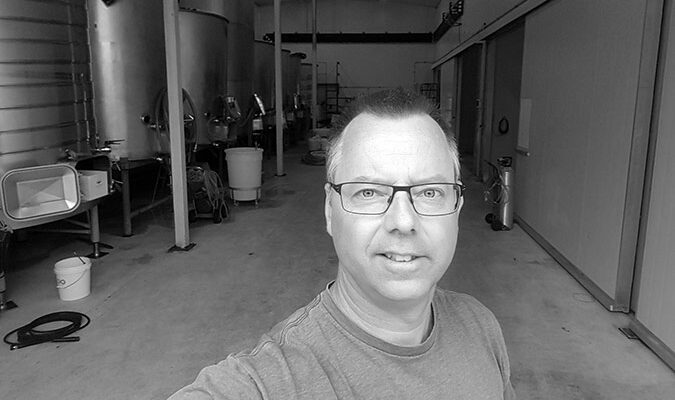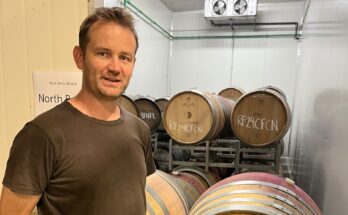If you keep an eye on who is winning awards in New Zealand for their Pinot Noir, then you will know the name of Matt Connell. Moving from a successful career at Akarua, and with a load of experience from over in Oregon, he has started his own label off with quite a bang – winning the Trophy at the NZ International Wine Show, and quietly winning medals with a range of the wines he makes on contract. We couldn’t not make time to catch up with Matt when down in Cromwell earlier in the year.
WineFolio: Can you fill us in on a bit of background?
Matt Connell: I’ve done my corporate winemaking thing – to a degree, but my big thing is probably helping people too – to do their own projects. I do a bit of consulting for a few companies and I do contract winemaking – so that’s my main business. I lease a winery in Alexandra and I currently make about ten companies wines. So that’s my day to day and I really enjoy that as I get to deal with different fruit and different people. And some of those don’t know a whole heap about wine so I try to steer them in the right direction, with some sage advice. My own wines are not a side project, because they are equally as important to me – but I don’t have aspirations to grow them into some massive business. I want to keep them a bit harder to find. I’ve been lucky because I have done well with my winemaking in New Zealand over fifteen years. So I’ve got quite a good following for my wine regardless, and I sell a lot of it through the Cellar Door and just a few select fine wine shops. A few restaurants, but I don’t want to be in too many of those.
I’m a one-man band, so making a whole lot of wine for other people, doing my own thing; and I sell barrels for Francois Frére. I also do cross-flow filtration for the whole of Central Otago, so I’ve got a lot going on. My contract winemaking and my clients are my focus, and I want my own project to give me a lot of enjoyment and deal with vineyards I really want to deal with on a personal basis. And make the wines that I love drinking myself – so that’s what my project is about.
I draw a line in the sand – if my wines not good enough, I won’t produce them. 2016 was my first vintage for myself, so I made that at Aurum Wines because they had a bit of space. Then by ’17 I was too big so I went to another location and leased that building. Picked up a few more clients and made a bit more wine. But ’17 was a fantastic vintage with small berries and heaps of concentration like 2005, which was my first year of being based here full-time.
You don’t see those vintages too often, so I’m grateful to have seen two! ’17 was a phenomenal vintage and then ’18 we had the hottest vintage we’ve ever had. My chardonnay came off 5 weeks earlier than the ’17 pick. The wines in ’18 tend to be a bit lighter and a lot of flavour got blown out of them to a degree. I didn’t do a Bendigo Single Vineyard, which I would aim to do every year, but I won’t if it’s not there to be made. There was nothing in the barrel that screamed ‘single vineyard’ so I made more barrels of Rendition – that’s my main cuvee.
Because I’ve been here for a long time, I do have fantastic relationships. I don’t own a vineyard, so I buy fruit. People are really important to me and I want people to be treated fairly. Like wine – I won’t put one out if I don’t think it’s at the level I expect, I won’t produce one. I do about 1000 cases of my own wines. It will grow a bit more with some new varietal wines, but it’s not going to get a whole lot bigger than that. Then I can really concentrate on it
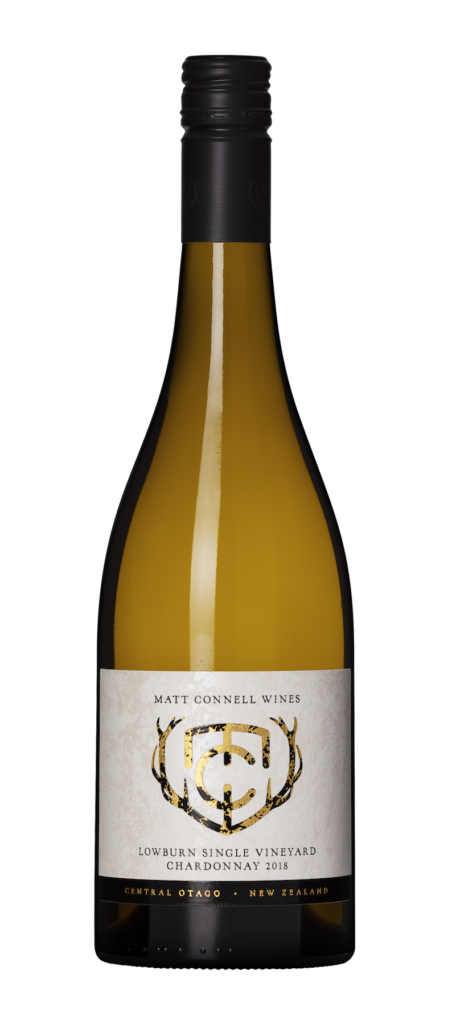
I work in the Cellar door a bit at weekends so I can talk to people about my wines, and it’s nice to know where they are going and who’s drinking them. The Bannockburn Hotel has my wines on their list and we drink up there regularly, and if someone’s there drinking it, I’ll go and have a yarn with them.
Because we are still quite small as a winemaking community, it’s quite collegiate. I made wine in Oregon for a few years, and my wife’s American, and they look after each other quite well there too. I think maybe because with Pinots – because you’ve got to really work on them – especially in the vineyard and you’re trying to understand it all – you tend to share information. Instead of trying to understand something in isolation, you’ve got to talk to people to try and get some ideas happening. So maybe Pinot is a bit different like that.
In Burgundy it’s an interesting one too – a lot of the producers there don’t share a lot of information with each other – they’ve just chipped away; but you see a range of wines in Burgundy too – and some of them are pretty ordinary, some of them are very good.
If you talked to Central Otago winemakers about different vineyards, I think it could come down to which are the ‘Grand Cru’ sites and which are the ‘Villages’ sites now, and in a couple of hundred years. Central Otago in my time here has been evolving a lot. Some of the larger companies have stylistically changed what they were doing and brought a lot of smaller vineyards into the fold. There’s been a lot of that happening in recent years. So some of the individual stories of Central Otago have disappeared a bit. There was a broader range of those stories compared to now. But we’ve had new people coming in as well, so those stories continue on. People that are coming in now have a bit more money behind them, which is a good thing as it’s not cheap to make wine. Or to pay for sales and marketing teams and do all the rest of it – it’s expensive.
WF: Is that why companies like VinPro and contract winemakers exist – to help people down that road?
MC: I think so, yes. It’s like me making multiple clients wines is giving people an avenue where they don’t have to have their own winery. And then getting the resource of my knowledge I guess? To help them get a bit of a jump up. If you don’t have that I think it can be a bit deflating, but also it costs a lot of money. You need to sell wine, to make wine – that’s just the brutal reality. Wine is a very romantic ideal, but if, at the end of the day, you don’t sell it then you don’t have a business.
And if you don’t have a business, you can’t make it. I’m very focussed on what I do, but I’ve also been the General Manager at Akarua, as well as the winemaker, for example – for eight years. So I had business experience there and I’ve been doing my own business now for four years, that’s been going really well. There’s a lot to wine. But if you’re getting into it with romantic ideals and haven’t thought it through, that can be bit of a trap. In the past Central Otago’s had a lot of wine sitting in warehouses, even though they are good vintages, because there’s only so much wine can be bought – within New Zealand – so if you haven’t got international distribution…
And because it’s farming as well, you’re dealing with the weather. There’s a huge amount you can’t control. The economics of the world economy – the dollar drops, then that has big impact. A whole range of things. It’s a tough old business. Fun – but tough. I wouldn’t do anything else. The challenge makes it’s interesting.
WF: Would you say it’s scientific or artistic – making wine?
MC: For me it’s probably more artistic. I definitely rely on numbers – I think you have to. You need to know if your pH is at a level where that wine is going to be happy in a bottle for a long period of time. But I don’t get too wound up about those things. I think it’s more artistic, and more of an experience thing. I’ve always worked for companies where I enjoyed the wines. I applied for those positions because I liked the wine. I wanted to learn. How did they get it to where it was? And take away the key points for myself.
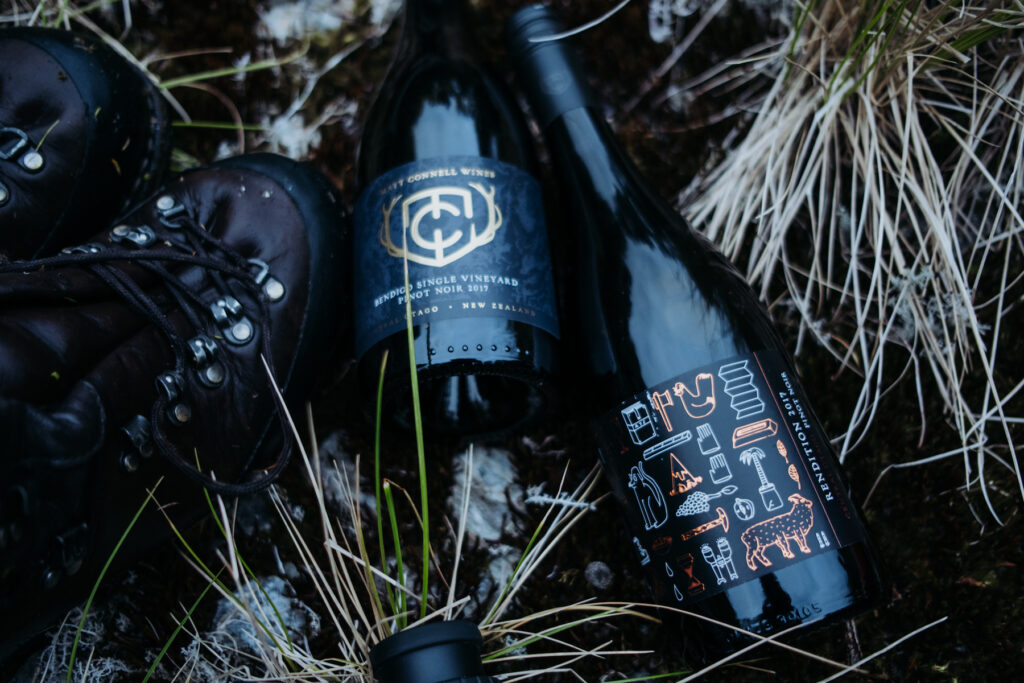
WF: is there a point in the year that you get ‘a feeling’?
MC: The big moments in the year are putting wines together. That’s always exciting. Blending is one of the things I’d say I’m pretty decent at. That’s the exciting part, and also the part where you have to be hypercritical. You’ve got to back yourself. The worst thing you can do is listen to other people at that stage. I never pin a wine down on the spot. I take it home and sit on it for a couple of days, and go back to it and try a few new things.
I look at wine over the whole year once it goes to barrel. It’s like different colours, like putting a painting together. I like to see finished wines quite early – so a lot of my wines will go through Malo early, and that gives me time throughout the year to get quite familiar with those different barrels. Or those different blocks, different vineyards. The wines will start to show themselves; and what needs to be with what, to a degree. And you’ll have a mental picture of what you’ve tasted throughout the year. Maybe that’s ‘the feeling’?
And Vintage is really interesting because it does come down to the vineyard. You can stuff it up as a winemaker, but if you don’t get it right in the vineyard, you haven’t got a base to work with really. The big difference is, everyone has got different tastebuds, right? So we’d all be looking for something different. You put every Central Otago winemaker in the same vineyard at the same time – we would all choose to pick on different days. It’s just how you taste things yourself. You can’t replicate that – it’s just the way it is. A critical decision right there, but it’s a great feeling – when you push the GO button – it’s exciting. Because you’re into it.
My Chardonnay 2017 was in the top five for Bob Campbell – he gave it a pretty good score – 95 or 96 I think – Rendition is a blend of Bendigo and Lowburn – the ’19 will probably have some Bannockburn in it too. Bendigo because it’s a bit more masculine structure – Lowburn because its always more floral and a little bit more soft richness, not full-on in your face. So a nice foil for each other. If you’re not careful with Bendigo it can be a bit tough for a while. It’ll soften and age beautifully but there is definitely more tannin out there, as it’s a warmer site and coming on quicker. You do have to temper that with something that can smooth the road a little bit.
My single vineyard wine – the Bendigo wine is big by New Zealand standards, but its rich – and that’s what I like. Partly because when I was in the States, that’s what we did; but also I just love drinking that style of wine. I don’t like those edgy, green Pinot Noir in the slightest. People like it like that, but it’s not for me. I don’t use a lot of whole bunch in my wines, a lot of the time I think it just adds green character to your wine.
Stemminess in wine is like if you put 50% new oak with your chardonnay – the oak becomes the wine, not the fruit. If it’s ripe – I can chew it in my mouth without spitting it out, and its got cinnamon characteristics, then I might put some in. But because I’m quite small I’ve got to be careful. It’s difficult for me to do a cuvee with whole bunch in it without potentially losing a portion of my crop – because if I don’t like it, I’m not putting it in. If you’re large enough and you do one tank; you can blend it away.
Because in New Zealand a lot of our Pinot vines are still quite young, I don’t think the wine can hold up to it a lot. So I avoid it like the plague. It’s not something I’m interested in that much. The best use of whole bunch, for me, around here is Lucie at Aurum Wines who does a 100% whole bunch – Mathilde I think – it’s beautiful, integrated, floral, spicy – but they’ve gone the full hog, not 10-15% in. So then it IS the wine, and more than just an artefact in the wine.
Rendition is my cuvee, but really, Single Vineyard is where the story is. That’s why I tried to do a Bannockburn from this vintage – ’19 but I haven’t pulled that one off. And that’s OK – I mean, it’s not through lack of trying; it’s just that I’m not happy enough with it. For me that’s where the interest is going to be. That’s what I’m going to concentrate on – like Grant at Valli – they’re a good model I think, and one I’d try to emulate. I’ve thought about making an Oregon Pinot because I lived there, and bringing that back to New Zealand under my own name. I want to do a few things like that. It gives me that scope and I think those are stories that people are going to be interested in.
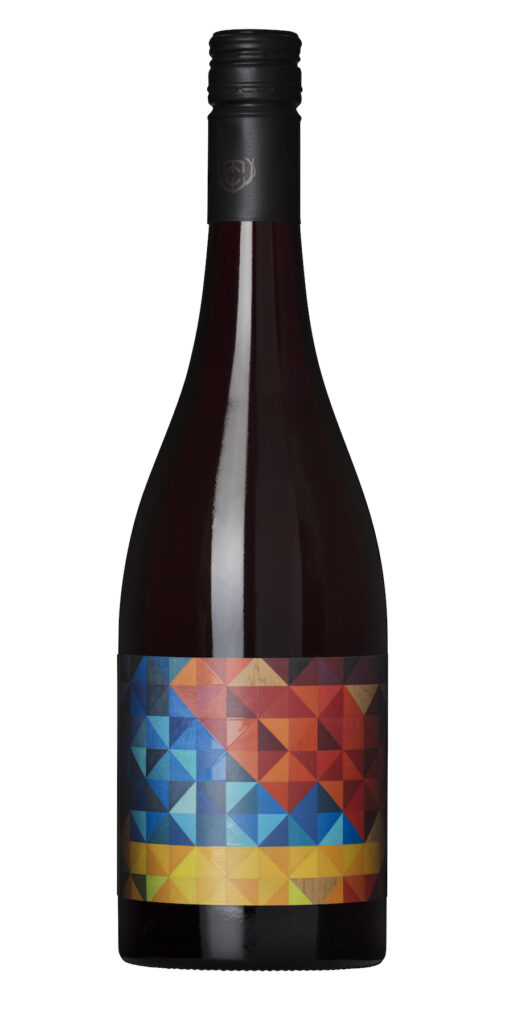
WF: So what happened with the ’18 – you didn’t win the Trophy? The shine’s come off!
MC: Yes, I have to say, that competition has been good to me. I do like that there’s a nice variety of judges in that competition. And a good variety of wines from across the country, so I think you get a fair look at the wines in there.
WF: What do you think of Climate Change and Global Warming?
MC: I think it is going to prove tough for the world of wine, including us. When I was in Oregon we had some pretty stable vintages, but from 2003 on it starting getting a bit wacky really. Here it’s changed quite a lot in my time. The first few years were stable, but the last three or four have been quite varied. We’re still getting heat; and Central Otago always does well if we get a block of heat in the growing season. That will get us through. So we were all worried pre-Christmas because it was pretty cool, but then we’ve had a good run of weather just recently.
This year will have a bit more variation potentially because flowering was a bit longer. But those Viticulturalists and Vineyard Managers who manage those vineyards for that variation – so they’ll take off a bit more crop; they’ll even out the bunches; they’ll take shoulders off; open it up and get as much sun as they can. But that’s the same every year. But someone who does that 5% better than their neighbour – the wine should be 5% better than the next wine.
That never changes, but Global Warming here has presented challenges. It’s been wetter at times, and our snowfall has changed quite a bit. We’re lucky because we’re amongst the mountains so we do tend to get a bit of rain – and at the right time, mostly. For grape varieties, we’ve always been on the edge, climate-wise anyway; so traditionally it’s been a bit cooler than we needed it to be. I’d like it to stay like that.
I don’t know if it will, but at the moment we’re getting blocks of heat – it’s not constant heat. If we started seeing vintages like ’18 – with constant heat – it will become tough. We’ll have to start planting something else, like Syrah. 2018 was really too hot for Pinot. We had a couple of months where it was in the 30s every day – didn’t change – and at night time we didn’t get a lot of cooling. So that really changed the profiles of the wines.
WF: I always think if you’re growing Pinot Noir, then the neighbour should be Chardonnay. And I think the Chardonnays I’ve had from Central show really well.
MC: Yes, I’ve concentrated on Chardonnay as well. I’ll do Riesling and I’ll make a bit of bubbles. Because I did that at Akarua and enjoyed making bubbles. But that’s for me, here; I’m not going to have that widely sold anywhere. I like those wine styles and I want to have some for myself.
WF: You say you’re making wine for other people – is that something we should be looking out for? Do they ever score higher than your own brand!?
MC: One of my clients won the Cuisine Top 10 Pinots last year – 8 Ranges, I make their wine. Theirs is a nice vineyard – it’s in Alexandra, which is where my winery is. Alexandra is an interesting place and hugely under-rated in Pinot, in Central. It’s a bit more floral and a little bit lighter – more Burgundian in structure. So I like it. It’s the sub-region to watch. Antony Worch, of Alexandra Vintners, is a winemaker down there who makes very good wine. I’m making a range of them now for people in Alex, and those wines are doing well. There are some sites there – I’m dealing with a new vineyard called South Edge whose vines date back to ’82 but the vineyard is being rehabilitated. I want to do a single site Alex wine.
WF: I love what you’re doing with the labels!
MC: Yes, it’s a bit different, but that’s because it’s a personal project. I happen to be quite interested in New Zealand art, and street art in particular. I get bored with regular wine labels, but also, because I love art, I’ve commissioned art for the Rendition label. Then I get the original, and the idea is that in some time to come I’ll have my own tasting Room, and the art will be on the walls. The art has been a lot of fun.
The first one in 2016 and ‘17 is Andrew J Steele who is from Taranaki, which is where I was born. He does a few interesting things and I commissioned him to do my first label which represents things I’m interested in and my life. And another artist called Component did my ’18 and ’19 label, which is a representation of the Southern Alps. And I’ve got a new artist on board who is working on a label for ’20 and ’21.

